I've realized that I prefer stitch markers made of yarn over store-bought stitch markers. The markers that I like are small rings of yarn, tied with a knot.

I first made yarn markers to avoid having to get up from the couch one evening. The cat had just fallen asleep in my lap, and I didn't want to disturb her.
After using the yarn markers, I found they had other advantages besides convenience. The thing I like most about them is that they do their job without getting in the way. Their softness means that they don't dig into my fingers, and they don't hamper my access to the surrounding stitches as they get near the needle tip, as I find I with solid markers.
Initially, I was worried that I might knit the marker, mistaking it for a stitch. However, having used yarn markers for a few years now, I can say that's never happened to me. I can feel the little knot as it gets close to the needle tip, and since the marker isn't attached to the surrounding stitches, it behaves differently to a stitch. So knitting it isn't something that I worry about any more.
I was also worried that the knots might come undone. With some yarns I found that did happen, but I soon discovered plenty of yarns where the knots stay secure. One of my favorite yarns for markers is De Rerum Natura Ulysse, a slightly fuzzy-textured, woolen-spun yarn. Still, it's always a good idea to test markers if you're using a new yarn to make them. (More on that below.)
Despite having used yarn markers for a long time, I only recently realized that I actively preferred them to store-bought markers. I had excavated a half-done sock from my stash, and found a store-bought marker on the needles. I started work on the sock, thinking it would be good to knit with a "real" stitch marker again—but I didn't enjoy it at all! I'm not sure if I've just forgotten how to deal with solid markers, or if I always found them so annoying. Either way, I have no urge to try and get used to them again!
If you'd like to try making yarn markers yourself, I have a few tips.
Making yarn markers
- Use a square knot (also called a reef knot), as shown below. It's similar to the classic "double" knot that I'm guessing most of us learnt as kids, but much less likely to come undone.
- Make the marker just a little bigger than your needle. I usually tie the markers around my pinkie finger which I find works well for sport-weight, DK and worsted-weight yarns. For anything smaller, I tie the marker around a pencil.
- Unfortunately, as I mentioned earlier, not all yarns will stay knotted. Choose a yarn which isn't super-smooth. If you're using wool, go for the slightly fuzzier textures of woolen-spun or tweedy yarns.
- Whichever yarn you go for, test the marker before you use it, as shown further down.
Tying a square knot
Every time I make a marker, I remind myself of the steps for tying a square knot with the phrase, "Left over right and under; right over left and under".
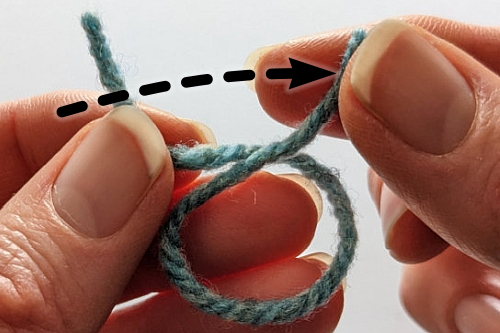
1. With a piece of yarn approx 15cm (6") long, take the left end over the top of the right end...
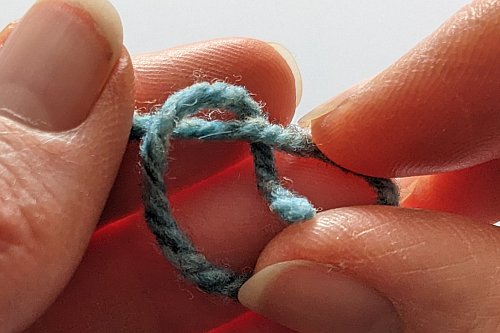
2. ...and then under and through the loop.
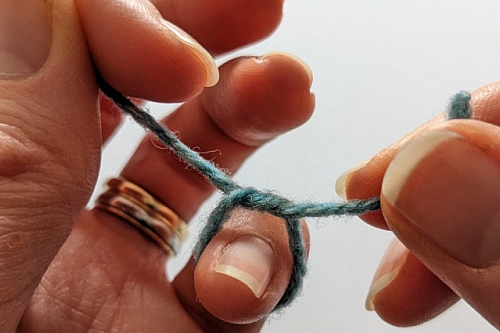
3. Put your pinkie finger through the loop and pull the loop closed. You can use a pen/pencil instead of your finger if you find that too fiddly, or if you want to make a smaller marker.
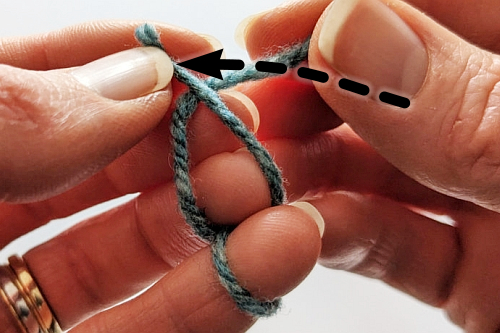
4. Then take the end on the right over the top of the left end...
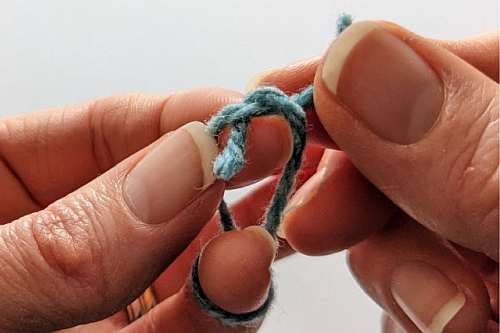
5. ...and then under and through the loop.
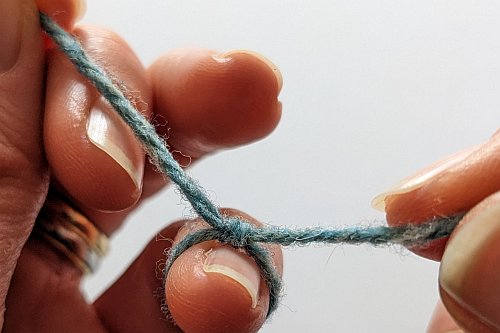
6. Pull the ends firmly to tighten the knot.
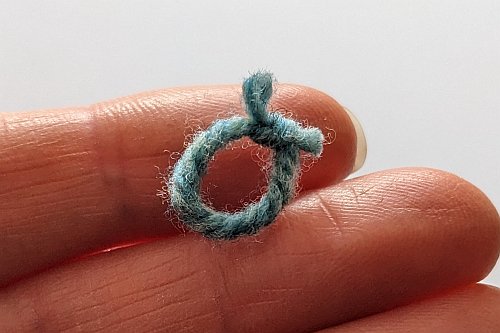
6. Snip off both ends, leaving short tails.
Testing the marker
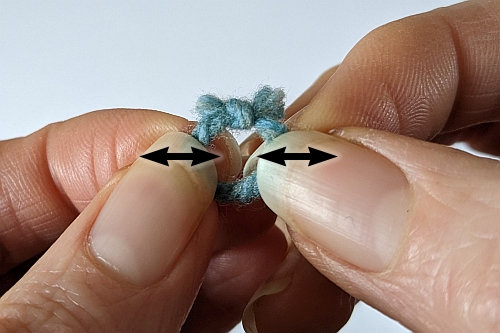
1. Pull on the 'shoulders' of the marker, just below the knot, multiple times. Don't pull too hard, which might lock the knot temporarily, but doesn't mimic the more gentle pressures that the knot is subject to as you're knitting. If the knot holds firm after about 20 pulls, then your yarn is likely to be safe to use for markers. The marker in this picture, made with a slightly fuzzy, woolen-spun yarn, passed the test.
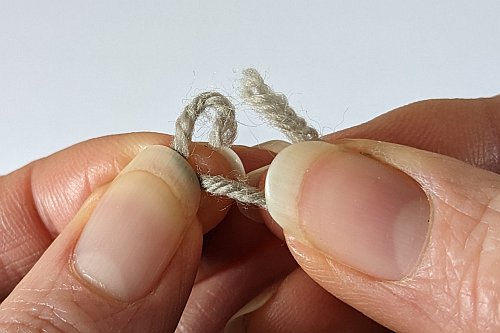
2. On the other hand, this marker made of yarn with a smoother texture gave way pretty quickly. (You could always make a slip knot with a yarn like this and use that as a marker, so long as you leave the ends much longer. The longer ends mean that it's not quite so easy to use, but it works fine if there's nothing else!)
Before I started testing my markers, a few of them did come undone. Luckily, even when they're undone they don't fall out very easily, and I never actually lost a marker before I removed it myself. So you don't have to worry too much about losing your place.
Let me know if you try them (email hello@yarnsub.com)—I'd love to hear what you think!
—Wendy

